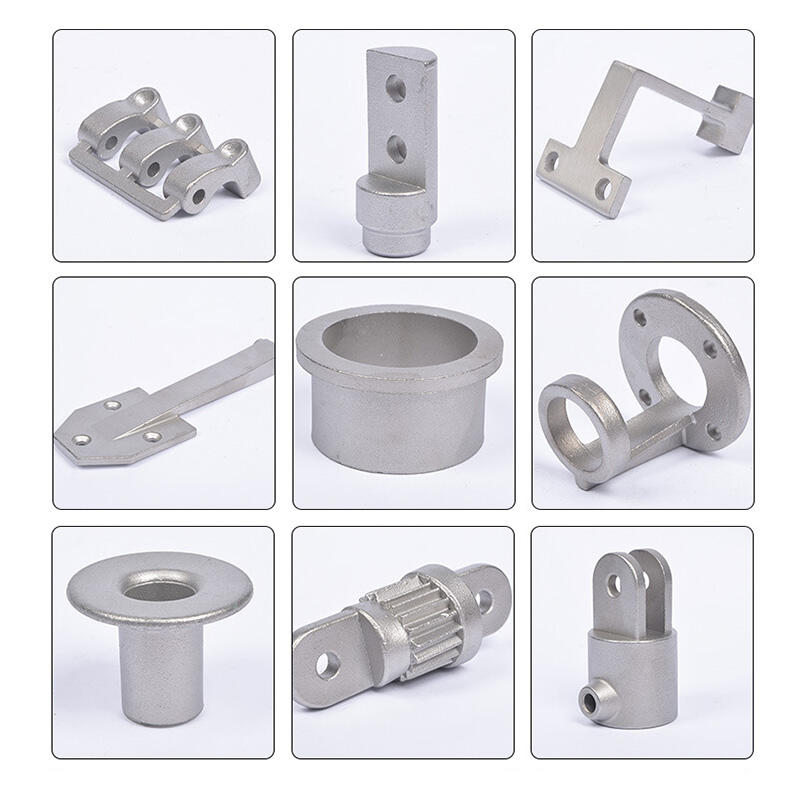Introduction
All kinds of custom die castings are one of the pillars in manufacturing, and it has a wide range applications from auto components to consumer electronics. At the same time, die casting alone does not determine how good a cast will be. It could make the final product more appealing, stronger and majorly functional as well. So, our below article will give you the insights on comparing different post-processing options like machining process of custom die castings with Anodizing and Painting.
Machining
One of the most common post-processing operations for die castings to achieve final tolerances and surface finish is machining. Basically, it focuses on extensive material removal to arrive tolerances and dimensions reliably. Turning, milling, drilling and grinding are examples of machining processes that have common roles during the production process to shape or finish castings. The machined part is improved with better dimensional control over casting and enhances the appearance to also meet specified die castings.
Anodizing
Anodizing is an elector chemical process that converts the metal surface into a decorative, durable, corrosion-resistant and wear-resistant oxide layer. This process is used especially in the case of aluminum die castings, where an electrical current is run through the metal to remove its free ions and react it with an electrolyte for covering layer. While this finish makes the cast aluminum significantly harder it can also be colored to offer a more aesthetically pleasing look that may fit into your custom build.
Painting
Painting — Die castings are painted as a post-processing step to improve the aesthetics and protect them from external factors. This protects the casting from environmental factors, especially moisture and corrosion as well is makes it easier to produce a finished casting ready for painting.
Common methods for painting die castings include spray painting, powder coating,E-coat. All three methods have their benefits such as strong adhesion, durability and finish.
PRO TIP: Picking painting selections is dependent upon how you want them to look and where the casting will end up.
Polishing and Buffing
Polishing & Buffing: Polishing and buffing are methods to get rid of surface imperfections from the component outer area, generating an excellent finish. These types of techniques utilize abrasives and polishing compounds as a way to smooth the surface (eliminate roughness) while also introducing shine on that given product. It appears that our Polishing and Buffing utilization/update has been expanded since these procedures refine die castings to an attractive surface in addition to reducing reflection of the part.
Corrosion-Resistant Surface Treatments
For many die casting applications, particularly those that will be exposed to harsh environments, resistance to corrosion is crucial. Chromating, phosphating and conversion coatings treatments are applied on the surface in order to act as a barrier for corrosion. These treatments generate a chemical conversion coat on the metal surface which affects against rusting and ultimately increases product life.
Heat Treatment & Stress-relieving
To improve the mechanical properties of die castings and to reduce internal stresses, such heat treatment processes are used as annealing (including sub-zero heating), normalization or stress relieving. The solution heats and then controls cooling, it is an ideal choice for applications that require post casting diffusion processes to change metal micro structure or release the residual stress in castings. The die casting should have the desired strength and ductility, otherwise it will suffer from issues such as stress corrosion. Heat treatment is important to relieve residual stress created during casting succumb brittle alloys or those of greater thickness that may not be rated for cast without cracking, Other purposes are uniformity between piece to piece within production runs fair wear resistance. It also enhances performance..
Assembly and Integration
Most of die castings are assembled with other parts in assembling line, be a whole product. It also includes necessary assembly operations such as welding, threading and fastening to ensure the final assembly will operate effectively and perform well. A finished product is produced by incorporating the die casting into other parts during an assembly operation.QC and Inspection
After this, examination and quality control form an important part of die castings in post-processing. Visual inspection, dimensional check and non-destructive testing are used to ensure the dimensions of castings/ surface quality. The quality control function assures these die castings adhere to the standards and specifications throughout production, ultimately resulting in a high-quality end product.
Conclusion
The aesthetics of an individual piece can be changed with post-processing options such as finishing, painting and anodizing; since they finish from the custom die casting should achieve for it also to work correctly. The processes also improve the standards of die castings and allow them to meet particular needs within different applications. Manufacturers have the ability to enhance their Part quality and service life ensuring longevity of components by choosing a range appropriate post processing techniques.

